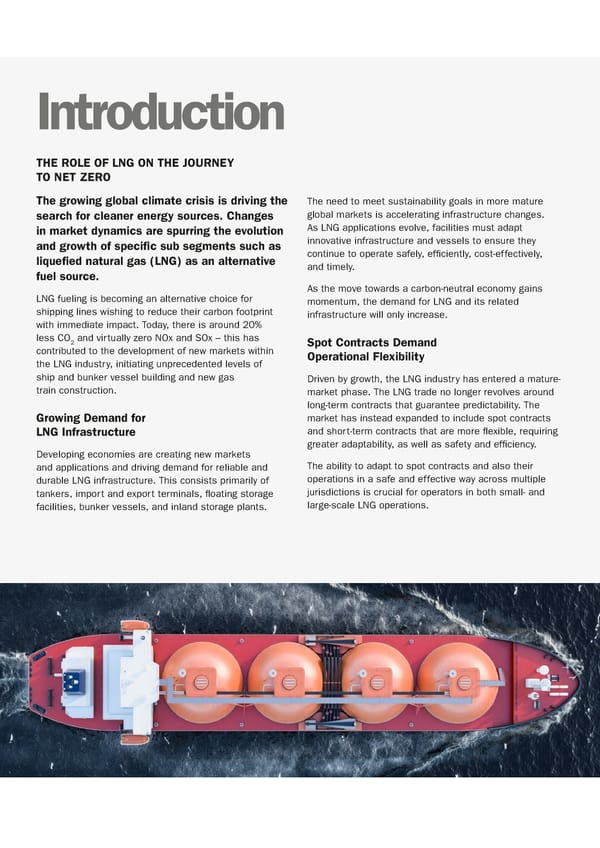Introduction THE ROLE OF LNG ON THE JOURNEY TO NET ZERO The growing global climate crisis is driving the The need to meet sustainability goals in more mature search for cleaner energy sources. Changes global markets is accelerating infrastructure changes. in market dynamics are spurring the evolution As LNG applications evolve, facilities must adapt and growth of specific sub segments such as innovative infrastructure and vessels to ensure they liquefied natural gas (LNG) as an alternative continue to operate safely, efficiently, cost-effectively, fuel source. and timely. As the move towards a carbon-neutral economy gains LNG fueling is becoming an alternative choice for momentum, the demand for LNG and its related shipping lines wishing to reduce their carbon footprint infrastructure will only increase. with immediate impact. Today, there is around 20% less CO and virtually zero NOx and SOx – this has 2 Spot Contracts Demand contributed to the development of new markets within Operational Flexibility the LNG industry, initiating unprecedented levels of ship and bunker vessel building and new gas Driven by growth, the LNG industry has entered a mature- train construction. market phase. The LNG trade no longer revolves around long-term contracts that guarantee predictability. The Growing Demand for market has instead expanded to include spot contracts LNG Infrastructure and short-term contracts that are more flexible, requiring greater adaptability, as well as safety and efficiency. Developing economies are creating new markets and applications and driving demand for reliable and The ability to adapt to spot contracts and also their durable LNG infrastructure. This consists primarily of operations in a safe and effective way across multiple tankers, import and export terminals, floating storage jurisdictions is crucial for operators in both small- and facilities, bunker vessels, and inland storage plants. large-scale LNG operations.
 TM&I LNG Flexibility Factor Report Page 2 Page 4
TM&I LNG Flexibility Factor Report Page 2 Page 4